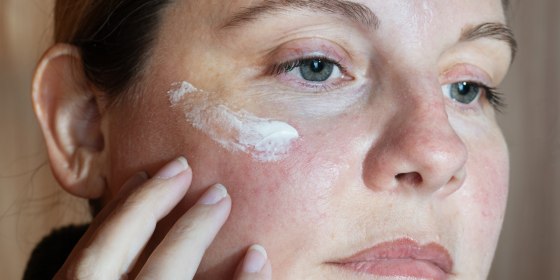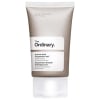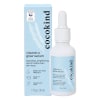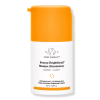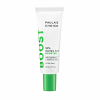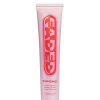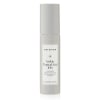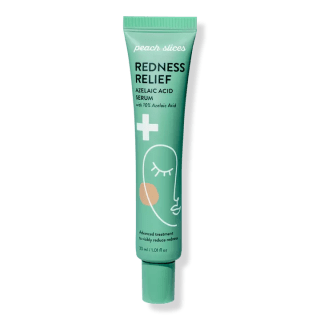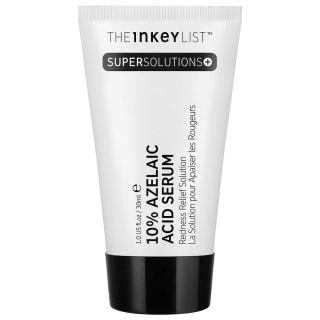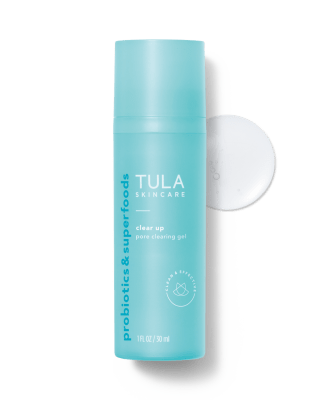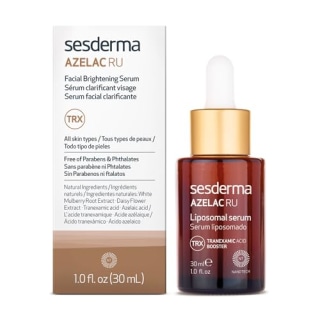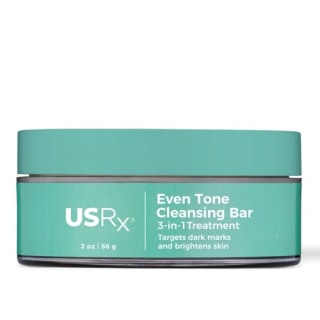If you struggle with acne, you’ve probably used your fair share of benzoyl peroxide and salicylic acid. But when it comes to keeping sensitive skin clear, every common acne treatment can feel a little too irritating. That’s where azelaic acid comes in: The under-the-radar ingredient helps unclog pores and prevent acne with less irritation, while also lightening dark spots and acne scars in the process, says Dr. Rachel Westbay, a board-certified cosmetic and general dermatologist at Marmur Medical.
I spoke with eight dermatologists about how azelaic acid works and how you can incorporate it into your skin care routine. I also compiled some azelaic acid products in line with our experts’ guidance and recommendations.
What is azelaic acid and how does it work?
Azelaic acid is a tyrosinase inhibitor (the enzyme responsible for making melanin), which helps to even out your skin tone and prevent and treat hyperpigmentation due to conditions like melasma, says Westbay. It can also lighten acne scars, dark spots (most often seen on darker skin tones) and red scars (most commonly seen on fair skin tones), according to Westbay.
Azelaic acid is also an antibacterial antioxidant that unclogs pores, reduces inflammation and treats acne. It’s milder than other acne-fighting ingredients like salicylic acid and adapalene, which makes it more suitable for those with sensitive skin, acne and rosacea, says Dr. Lindsey Bordone, a board-certified dermatologist and assistant professor of dermatology at Columbia University Medical Center. Plus, it’s one of the only pregnancy-safe acne treatments on the market.
Prescription-level azelaic acid is available at 15% and 20% strengths, and these have more research to back up their efficacy. However, you can also find over-the-counter options at strengths up to 10%. If your skin can tolerate it, try combining a lower-grade strength OTC option with other acne-fighting ingredients, which can be “much more effective than when [azelaic acid is] used alone,” says Westbay.
How I picked the best azelaic acid products
While shopping for OTC products that contain azelaic acid, experts recommend considering the following factors:
- Concentration: While prescription-strength products are usually best because they have higher concentrations of azelaic acid, OTC products that have a 10% strength or lower can still be effective, experts say.
- Formulation: The formulation you choose depends on your personal preference and how it fits into your skin care routine. Though typically found in serums, you can also find azelaic acid in cleansers, face masks, creams and gels.
- Additional ingredients: Depending on the specific skin concerns you’re targeting, consider products that pair well with azelaic acid, including those with skin-brightening ingredients like niacinamide and vitamin C, and hydrating ingredients like hyaluronic acid. Avoid layering this ingredient with harsher acids like alpha hydroxy acids (AHAs) and salicylic acid because it can compound irritation, experts say.
Want more from NBC Select? Sign up for our newsletter, The Selection, and shop smarter.
Best azelaic acid products of 2025
Below, I’ve compiled our experts’ favorite products containing azelaic acid, as well as highly rated options from expert-recommended and NBC Select staff-favorite brands.
Best overall
This cream from The Ordinary is a favorite among my experts because it helps improve the appearance of blemishes and dark spots. The cream, which is also one of our favorite acne and melasma treatments, has 10% azelaic acid, and it’s gentle enough to use up to twice a day, according to the brand.
Best for dark spots
This face serum brightens dark spots, evens out skin tone and improves hyperpigmentation caused by breakouts, says Dr. Joshua Zeichner, director of cosmetic and clinical research at Mount Sinai Hospital. It’s noncomedogenic and hypoallergenic, so it’s safe for sensitive skin. Westbay also recommends the brand’s Niacinamide + Azelaic Acid Duo, a 2-in-1 product that targets acne, minimizes pores, improves dullness and lessens the appearance of uneven skin tone and texture, she says.
Best for scars
This Topicals spot treatment fades scars and hyperpigmentation using azelaic acid, tranexamic acid and niacinamide. This is a favorite of our NBC Select editors, who tried the serum over the course of two months on scars and hyperpigmentation — they say they noticed their dark spots became lighter and their scars had begun to fade almost entirely. The brand recommends using this serum at night after washing your face and before your moisturizer. Since it has tranexamic acid, avoid using it with AHAs, BHAs and retinols since it can irritate your skin, according to the brand.
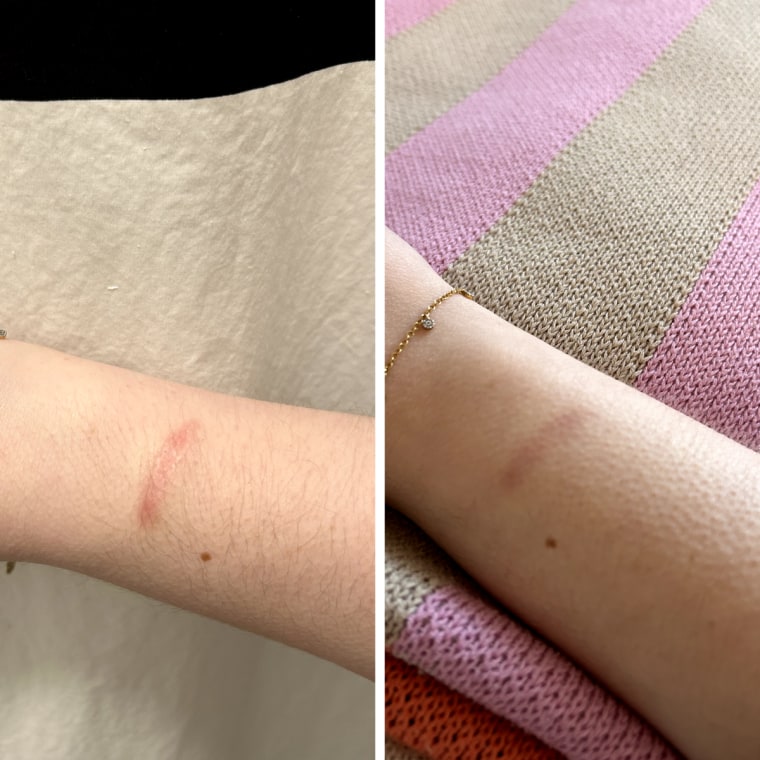
Best with vitamin C
Naturium, a favorite brand among NBC Select staff, makes some of our favorite body lotions and salicylic acid products. This azelaic acid serum has niacinamide, vitamin C and coffee seed extract, which work together to even out skin tone, gently exfoliate and balance excess oil, according to the brand. The brand recommends using 1-2 pea-sized drops in the morning and at night, and gradually increasing the amount you use over time (depending on how much your skin can tolerate). The serum is available in both 1-ounce and 2-ounce sizes.
Best for irritated skin
This azelaic acid serum from Peach Slices —the brand behind some of our favorite pimple patches — also has panthenol, which is a humectant that helps the skin retain moisture, experts say. You can use this serum both day and night, and it can help reduce signs of redness and rosacea thanks to ingredients like hydrating green algae and soothing cica, according to the brand.
Best for redness
This azelaic acid serum comes recommended by Dr. Erum Ilyas, a board-certified dermatologist at Schweiger Dermatology. It’s especially great if redness is a major concern since the serum has microfine green-colored particles that can help mask redness, as well as 0.3% allantoin, which is a chemical compound that can help soothe the skin, according to the brand. You can apply it twice a day.
Best brightening
Cocokind is one of our favorite women-owned brands, and this serum combines the brightening effects of azelaic acid and vitamin C, plus the hydrating power of hyaluronic acid. Though the serum has one of the lowest percentages of azelaic acid on this list, it’s great for those with very sensitive skin (sporting the National Eczema Association Seal of Acceptance, to boot). The serum is highly rated, with a 4.7-star average rating from over 1,400 reviews at Target.
Best for acne-prone skin
This gel pairs azelaic acid with niacinamide, which work together to brighten your skin’s tone and improve texture, says Dr. Hadley King, a board-certified dermatologist in New York City. It also has 2% salicylic acid that keeps acne at bay, probiotics that soothe and calm inflammation and hyaluronic acid that helps with hydration, according to the brand.
Best face mask
Drunk Elephant makes some of our favorite expert-recommended cleansing balms and alpha hydroxy acid products, and this gel-cream from the brand has azelaic acid to reduce dark spots and redness. It also has 1% salicylic acid to keep blemishes at bay, and a blend of brightening ingredients to tackle hyperpigmentation, according to Drunk Elephant. The brand recommends applying two to three pumps of the cream as the last step of your nighttime or daytime skin care routine.
Best for melasma
This Sesderma serum is one of Westbay’s favorites for excessive pigmentation on the skin. It can tackle melasma and post-inflammatory hyperpigmentation from acne scars, too, she says. The serum is a combination of several active ingredients, including azelaic acid, retinol and vitamin C. The formula also contains tranexamic acid, a topical treatment that “works particularly well for [treating] discoloration resulting from UV light,” says Westbay.
Best cleanser
This 3-in-1 cleanser, mask and exfoliator has azelaic acid, niacinamide and kojic acid, another tyrosinase inhibitor that can lighten dark spots. You can apply the cleanser on its own or use the included exfoliating sponge to massage it onto your skin and leave it on for a few minutes, according to the brand. You can also use it as a brightening mask and leave it on for 3-5 minutes before rinsing it off with cold water. The cleansing bar has a 4.5-star average rating from over 2,200 reviews at Ulta.
Meet our experts
At NBC Select, we work with experts who have specialized knowledge and authority based on relevant training and/or experience. We also take steps to ensure that all expert advice and recommendations are made independently and with no undisclosed financial conflicts of interest.
- Dr. Rachel Westbay is a board-certified dermatologist at Marmur Medical in New York City.
- Dr. Lindsey Bordone is a board-certified dermatologist and assistant professor of dermatology at Columbia University Medical Center. She specializes in adult general dermatology, managing all conditions of the skin, hair, and nails.
- Dr. Joshua Zeichner is the director of cosmetic and clinical research at Mount Sinai Hospital.
- Dr. Hadley King is a board-certified dermatologist in New York City.
- Dr. Erum Ilyas is a board-certified dermatologist at Schweiger Dermatology. Dr. Ilyas specializes in adult and pediatric medical dermatology, cosmetic dermatology and skin cancer treatment.
- Dr. Ronda Farah is a board-certified dermatologist at the University of Minnesota Medical School and M Health Fairview.
- Dr. Aaron Secrest is a board-certified dermatologist and assistant professor of dermatology at the University of Utah. He is the creator of medicalsecrets.com offering practical skin care advice from an expert.
Why trust NBC Select?
I’m an updates editor at NBC Select who has written a variety of skin care stories, including treatments for cystic acne, keratosis pilaris and dark under-eye circles. For this article, I spoke to eight dermatologists about how azelaic acid works and highlighted their recommendations for the best products to consider.
Catch up on NBC Select’s in-depth coverage of tech and tools, wellness and more, and follow us on Facebook, Instagram, Twitter and TikTok to stay up to date.

